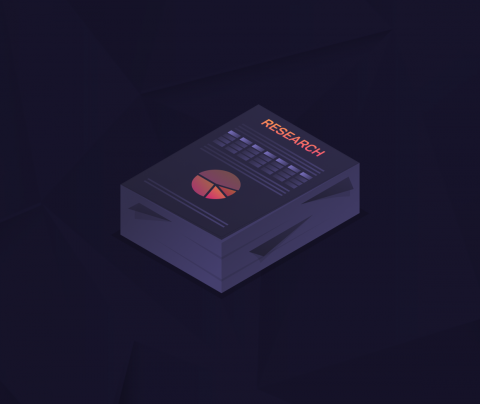When I break down affiliate marketing vs dropshipping in 2026, the biggest shock for beginners is how different the revenue engines actually feel once you run them at scale. On paper, both models look like online freedom with low entry barriers. In reality, one of them gives you predictable ROI visibility, and the other turns into a logistical maze that eats your free time one support ticket at a time.
Dropshipping gives you margin per sale, sure, but every order attaches itself to a whole chain of fragile steps. Product availability. Supplier mood swings. Delivery delays. Refund windows. Chargebacks that hit your Stripe account like a slap. The model stacks liabilities on top of liabilities. You earn and you carry risk.
Affiliate marketing strips that away. I earn from the traffic I deliver. I don’t ship anything. I don’t lose sleep over packages stuck at customs. I care about routing, conversion funnels, click quality, GEO flows, and payout accuracy. When you see it in action, you realize affiliate revenue looks smaller per event but way cleaner per effort.
So the comparison shifts. It’s not “which pays more?” It’s “which model doesn’t collapse every time something outside your control breaks?” And in 2026, the number of moving parts determines your mental sanity.
The real investment difference: time, labor, chaos
Let’s talk effort. Every newcomer underestimates how much hands-on work dropshipping throws at them. The endless cycle goes like this:
- Build the store
- Fix the product pages
- respond to complaints
- check supplier delays
Everything feels like a small task until you realize it’s daily maintenance disguised as business. You think you’re building a brand, but you’re playing customer support roulette while your ads burn cash.
Affiliate marketing also needs setup – trackers, traffic sources, funnel logic – but once it’s live, the operational overhead doesn’t multiply every time a buyer sneezes. You spend your time testing angles instead of chasing tracking numbers and praying the supplier didn’t ship someone a broken blender.
And the biggest hidden cost of dropshipping? Emotional friction. You wake up, check disputes, see complaints, and instantly feel your energy dip. You planned to analyze ads, but ended up writing apology emails to people demanding refunds.
Affiliate marketing has friction, too, but it’s analytical friction. Which I’ll take any day.
Scalability in 2026: the bottleneck nobody wants to admit
If someone asks me which of the two scales faster, I answer with a question: “Where does the bottleneck live?”
In dropshipping, the bottleneck is your supply chain. That’s bad. You can’t force a supplier to ship faster. You can’t prevent customs from delaying a package. You can’t stop a warehouse worker from throwing your product into a box like they’re angry at it.
Every sale increases complexity. More orders mean more refunds, more processing, and more chances for the whole machine to choke.
Affiliate marketing scales through logic, not logistics. If I want to push more volume, I add more traffic sources, more GEOs, more funnels, more landing pages. I don’t build infrastructure. I build decision paths.
In 2026, the ability to automate these paths is the differentiator. Traffic is bigger, platforms are stricter, compliance is rougher, and manual optimization is no bueno. That’s why the model with fewer physical dependencies – affiliate marketing – runs faster.
When I bring in tools like Hyperone to automate routing, block fraud, and keep my flow clean, the difference becomes extreme. I’m scaling decisions, not headaches.
The invisible enemy: ROI opacity
Here’s the core problem that kills 90% of dropshipping attempts: your numbers lie to you.
Ads show one thing. Supplier fees show another. Shipping fluctuates randomly. Chargebacks nuke your margin. Return windows cut into your cash flow. Payment processors suddenly hold your money.
All that creates a fog where you think your product is profitable until the end of the month, when your accountant asks why your bank account looks like it went through a war.
Affiliate marketing has way fewer blind spots. I send traffic. It converts or it doesn’t. The numbers hit me straight in the face. No illusions. No, “maybe the supplier will reduce shipping fees next month.” No, “perhaps customers won’t ask for refunds this time.” Reality is immediate.
ROI visibility is a massive advantage because it tells you exactly when to scale and when to stop. Dropshipping hides that signal behind layers of operational noise.
Automation: the breaking point between the models
In 2026, automation isn’t a shiny bonus. It’s the deciding factor for survival.
This is where the gap between the models becomes huge. Dropshipping automation helps, but the main revenue engine is stuck inside a physical chain. You can automate email flows. You can automate upsells. You can automate order syncing. But you can’t automate away the fact that someone on the other side of the world still has to pack your item and deliver it.
Affiliate marketing benefits way more from automation because the business is digital from end to end. When I automate traffic segmentation, routing rules, carrier targeting, and anti-fraud, I see immediate results.
A single routing rule can turn a dying campaign into a profitable one. I’ve watched campaigns flip from negative to positive just because the wrong GEO flow got filtered out. I’ve seen fraud detection save thousands a week. I’ve seen UAD logic fix human errors I didn’t even know existed.
Hyperone helps with that by giving me tools to control traffic without babysitting it. Not hype – just actual workflow improvements.
Dropshipping doesn’t get those kinds of wins. Automation in that model never touches the real bottleneck: physical fulfillment.
The emotional sustainability test
Here’s a way I gauge business models: ask yourself which one gives you fewer panic spikes per week.
Dropshipping brings panic spikes like it’s a subscription service. Broken products. Wrong color sent. Delays. Customs. Angry customers. Payment holds. Supplier mess. Tracking numbers that don’t update. Refund requests written in caps lock.
It grates on you. Even if you’re tough.
Affiliate marketing gives you stress, too, but it’s cleaner. Traffic drops? Fix. Funnel breaks? Fix. Payout decreases? Adjust. You’re dealing with numbers, not whoever decided to throw your product package into a puddle.
When I factor emotional sustainability into the equation, affiliate marketing wins by a disproportionate margin. It keeps me in strategic mode instead of firefighter mode.
The scaling ceiling in both models
Both models hit ceilings, but only one breaks through them smoothly.
Dropshipping’s ceiling comes from support volume and fulfillment complexity. You can hire a team, sure, but that turns you into a manager of chaos. It’s doable, but it feels like climbing a hill wearing a backpack full of bricks.
Affiliate marketing’s ceiling comes from how well you automate your traffic stack. And that’s fixable. Traffic is abundant. Offers are abundant. GEOs are abundant. Scaling becomes a question of:
- Can I route better?
- Can I filter better?
Tools like Hyperone give me leverage because I can expand campaigns without multiplying workload. I set rules once and watch them run.
My 2026 verdict
If you want a physical product business, dropshipping scratches that itch. If you want a model that scales without turning your life into a stress simulator, affiliate marketing is the better bet.
Dropshipping can earn money. Affiliate marketing scales money.
And in 2026, scale isn’t a luxury – it’s survival.









